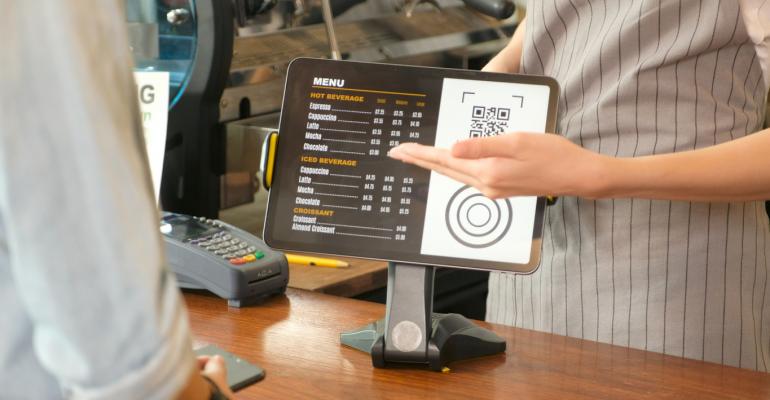Sponsored by Amazon Web Services
Consumers’ appetite for dining out may have returned to pre-pandemic levels, but an array of supply chain disruptions continues to make meeting that demand a challenge for restaurants. A few of the most recent casualties of bad weather and supply-chain issues have been potatoes, hot sauce, maple syrup and cream cheese. As a result, breakfast menus that call for those ingredients may look a little different this year.
According to a recent National Restaurant Association survey, 95% of U.S. restaurants experienced considerable supply delays or shortages of key food and beverage items in recent months, with the impact being felt across all segments of the industry.
“There’s no doubt that disruptions in the supply chain are impacting restaurant businesses,” says Hudson Riehle, National Restaurant Association’s senior vice president of research.
It’s also no surprise then that these disruptions are keeping operators up at night. While there are no easy solutions, some approaches taken by Amazon—considered to have one of the most innovative supply chains in the world thanks in part to cloud technology—can help restaurateurs improve supply chain capabilities to deliver better customer experiences and reduce costs. With Amazon Web Services (AWS), restauranteurs can use the same cloud services that Amazon.com relies on to improve forecast accuracy and reduce inventory holding costs.
Get control of your data
Whether an operation is in the unique position of owning its supply chain or is reliant on partnerships with manufacturers, suppliers, and distributors to keep its kitchens stocked, it’s critical to closely manage the supply chain to improve efficiency and cost-effectiveness.
The first step to getting a supply chain under control is collecting data from multiple sources, like point-of-sale systems (POS), supplier data, and third-party data such as weather or upcoming events, into a cloud-hosted storage solution.
When the fast-casual salad chain Sweetgreen wanted to develop ingredient production forecasts, they brought data together from 31 separate sources. Getting control of its data has helped Sweetgreen to better understand how much food to cook each day, minimized waste, and enabled them to serve the best food possible while driving operational efficiencies.
However, operators shouldn’t stop there. Data collected from various sources can be incomplete or out-of-date, so it’s critical to ensure all that data is automatically updated and cleaned frequently.
Increase forecast accuracy
More restaurant operators are giving up old-school spreadsheets in favor of automated forecasting. In fact, the International Data Corporation (IDC) predicts that by 2023 50% of all supply chain forecasts will be automated using Artificial Intelligence (AI), improving accuracy by five percentage points.
Among the growing number of foodservice chains already automating forecasting with AI is Blue Bottle Coffee, a global leader in third-wave coffee. When Blue Bottle was looking to optimize the sales process for a variety of pastry items like croissants, cookies, and waffles across its chain of cafes, its engineering teams built a Machine Learning (ML)-powered predictive ordering system to generate accurate future pastry demand.
ML models are trained to predict how many of each pastry every café should order daily or weekly based on inventory data, historical sales, and growth projects that leaders upload to Amazon S3, a cloud storage service, once a week. This predictive ordering system has helped Blue Bottle to accurately forecast demand, cut waste, and improve food utilization.
Optimize inventory management
To automatically capture the data for your inventory activities, the right technology is a must. Manually counting to identify how much product is left on the shelf won’t yield the real-time information you need to get the visibility you desire. Progressive brands are turning to AI and ML tools to develop predictive analytics, implementing everything from smart racks to IoT-based systems to sense and capture this information.
KFC Philippines, for example, predicts demand for menu items using Amazon Forecast. With these forecasts, the chicken chain can easily create cooking schedules, and monitor inventory levels to avoid out-of-stock items or delays for customers waiting in line for orders. Automated forecasting can lead to lowering the cost of inventory on hand and right-sizing of stores as storage space for food and packaging materials is better planned and managed.
Additionally, sharing forecasting metrics and IoT device data can connect restaurants with their suppliers and distributors, so they know when ingredients and supplies will be at their door. For example, if your restaurant freezer is fully stocked with french fries, you don’t need a new shipment for which you don’t have storage space. By sharing data, distributors can send items only when needed, instead of following a set schedule.
Use AI/ML to become prescriptive
With prescriptive AI/ML models that can generate what-if simulations, make forecast adjustments and determine last -minute allocations, restaurant operators can worry a little less about disruptions and focus on increasing operating income.
Louie Quiogue, chief information officer at Ramcar Group of Companies, which operates the 300 KFC outlets in the Philippines previously mentioned, is considering how to evolve its AI/ML capabilities beyond predicting demand. For example, they envision they will get to a point where they can facilitate the creation of ad hoc promotions at the store level when excess inventory is detected to sell through targeted items and prevent food waste.
Look ahead
No matter what the foodservice industry faces next—extreme weather, continued inflation, or any other unexpected turn of events—only restaurants that get smarter about managing their supply chain data and visibility will thrive. Using Amazon Web Services solutions, which Amazon built its leading supply chain management practice upon, will ensure that breakfast—or any other meal for that matter—doesn’t have to look different this year, or ever again.




